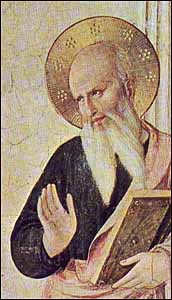Free E-Mail
Bible Studies
Beginning the Journey (for new Christians). en Español
Old Testament
Abraham
Jacob
Moses
Joshua
Gideon
David, Life of
Elijah
Psalms
Solomon
Songs of Ascent (Ps 120-135)
Isaiah
Advent/Messianic Scriptures
Daniel
Rebuild & Renew: Post-Exilic Books
Gospels
Christmas Incarnation
(Mt, Lk)
Sermon on the Mount
(Mt 5-7)
Mark
Luke's
Gospel
John's Gospel
7 Last Words of Christ
Parables
Jesus and the Kingdom
Resurrection
Apostle Peter
Acts
The Early Church
(Acts 1-12)
Apostle Paul
(Acts 12-28)
Paul's Epistles
Christ Powered Life (Rom 5-8)
1 Corinthians
2 Corinthians
Galatians
Ephesians
Vision for Church
(Eph)
Philippians
Colossians,
Philemon
1
& 2 Thessalonians
1 & 2 Timothy,
Titus
General Epistles
Hebrews
James
1 Peter
2 Peter, Jude
1, 2, and 3 John
Revelation
Revelation
Conquering Lamb of Revelation
Topical
Glorious Kingdom, The
Grace
Great Prayers
Holy Spirit, Disciple's Guide
Humility
Lamb of God
Listening for God's Voice
Lord's Supper
Names of God
Names of Jesus
Christian Art
About Us
Podcasts
Contact Us
Dr. Wilson's Books
Donations
Watercolors
Sitemap
|
|
The church at Ephesus and the surrounding cities, to which First, Second, and Third John were written, certainly received much attention during the apostolic era.
| 52-55 AD208 | The Apostle Paul founds the church in Ephesus and then teaches in Ephesus for about two years, even working some spectacular miracles, "so that all the residents of Asia heard the word of the Lord, both Jews and Greeks" (Acts 19:10) |
| 57 AD | Paul meets with the Ephesian elders (probably the house-church pastors) on the beach at Miletus, warning them of the divisions that would come (Acts 20:17-37). |
| 60-62 AD | Paul writes the Letter to the Church at Ephesus and to the nearby church at Colossae to deal with heresies that were arising in the churches. |
| 80-98 AD | John the Apostle resides in Ephesus and teaches in the churches of the area, producing the Gospel of John as well as these three letters to bring correction to the heresies that are dividing the church. |
| 95 AD | Jesus addresses the Church at Ephesus in the first of the Letters to the Seven Churches in the Book of Revelation. |
That's a lot of apostolic attention for this cluster of churches. So how did they do? As I look back on the strong teaching of 1, 2, and 3 John, three themes seem to stand out:
- A strong Christology of Jesus of Nazareth as the divine Son of God,
- Righteous living, and
- The command to love one another.
Orthodox doctrine, holiness, and love. Jesus commends the Church at Ephesus in his letter to them in Revelation:
"I know your works, your toil and your patient endurance. I know that you cannot tolerate evildoers; you have tested those who claim to be apostles but are not, and have found them to be false. I also know that you are enduring patiently and bearing up for the sake of my name, and that you have not grown weary." (Revelation 2:2-3)
So far as orthodoxy and high standards of righteousness, they seem to have succeeded. But at the point of love, the church is weak:
"Yet I hold this against you: You have forsaken your first love. Remember the height from which you have fallen! Repent and do the things you did at first." (Revelation 2:4-5, NIV)
They have failed to retain "the love you had at first" (Revelation 2:4, NRSV). In fact, Jesus says they have "left" (KJV), "abandoned" (ESV, NRSV), "forsaken" (NIV) that love.209 Is Jesus referring to love for God? I don't think so. Verses 2-3 seem to indicate that their actions stemmed out of their love for God -- "for the sake of my name." So the lack of love probably refers to love for one another.
My dear Christian brothers and sisters, to me the implication is clear. Orthodox doctrine and right living are vital, but they are not enough. If we are loveless -- if the world cannot see our love for one another and for them -- then our Christian testimony is distorted and impotent. Love is Jesus' primary command and at that command we must not fail. The success of the whole Christian enterprise is dependent upon our continuing to love.
In his commentary on Galatians 6:10, St. Jerome (347-420 AD) tells the story of "blessed John the evangelist" in extreme old age at Ephesus. He used to be carried into the congregation in the arms of his disciples and was unable to say anything except,
"Little children, love one another."
 The study is available paperback, PDF and Kindle book formats. |
At last, wearied that he always spoke the same words, they asked: "Master, why do you always say this?"
"Because," he replied, "it is the Lord's command, and if this only is done, it is enough."210
[209] Aphiēmi here means "to move away, with implication of causing a separation, leave, depart from," specifically, "give up, abandon" (BDAG 156, 3b).
[210] John R.W. Stott, The Epistles of John (Tyndale New Testament Commentaries; Eerdmans, 1964), p. 49, citing St. Jerome's commentary on Galatians 6, longer version, chapter VI.
Copyright © 2025, Ralph F. Wilson. <pastor![]() joyfulheart.com> All rights reserved. A single copy of this article is free. Do not put this on a website. See legal, copyright, and reprint information.
joyfulheart.com> All rights reserved. A single copy of this article is free. Do not put this on a website. See legal, copyright, and reprint information.
 |

|
In-depth Bible study books
You can purchase one of Dr. Wilson's complete Bible studies in PDF, Kindle, or paperback format -- currently 48 books in the JesusWalk Bible Study Series.
Old Testament
- Abraham, Faith of
- Jacob, Life of
- Moses the Reluctant Leader
- Joshua
- Gideon
- David, Life of
- Elijah
- Psalms
- Solomon
- Songs of Ascent (Psalms 120-134)
- Isaiah
- 28 Advent Scriptures (Messianic)
- Daniel
- Rebuild & Renew: Post-Exilic Books
Gospels
- Christmas Incarnation (Mt, Lk)
- Sermon on the Mount (Mt 5-7)
- Luke's Gospel
- John's Gospel
- Seven Last Words of Christ
- Parables
- Jesus and the Kingdom of God
- Resurrection and Easter Faith
- Apostle Peter
Acts
Pauline Epistles
- Romans 5-8 (Christ-Powered Life)
- 1 Corinthians
- 2 Corinthians
- Galatians
- Ephesians
- Philippians
- Colossians, Philemon
- 1 & 2 Thessalonians
- 1 &2 Timothy, Titus
General Epistles
Revelation
Topical


 To be notified about future articles, stories, and Bible studies, why don't you subscribe to our free newsletter, The Joyful Heart, by placing your e-mail address in the box below. We respect your
To be notified about future articles, stories, and Bible studies, why don't you subscribe to our free newsletter, The Joyful Heart, by placing your e-mail address in the box below. We respect your